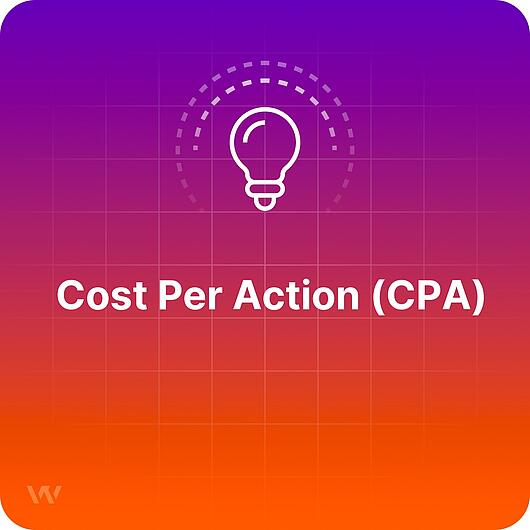- Why Us?
- Features
White Label
For SaaS Platforms & Agencies
Provide our complete analytics suite to your clients, directly within your own interface and with your/their own branding. Discover Analytics-as-a-Service and White Label Analytics. Great benefit, minimal effort.
- Pricing
- White Label
- Success Stories
- ResourcesGetting Started
Cost Per Action (CPA)

TL;DR
Cost Per Action is one of the digital advertising models that is gaining more and more popularity lately. CPA implies that an advertiser pays the publisher, not by the number of clicks, views or period of time, but by the number of conversions the ad has generated. This is a preferred model as it is based on results and not guesswork.
About Cost Per Action
Cost per action is also known as cost per acquisition or cost per order. It is a pricing ad model based on results and it implies that the advertiser will be charged a flat rate or a percentage from the sale, for each time the visitor of the ad is turned into a conversion. So basically the advertiser only pays the publisher when he gets a newsletter subscription, a purchase, registration or any other concrete result from the ad.
What are the advantages of Cost Per Action?
The CPA model has the advantages of being low risk and has a good return on investment (ROI) as the publisher of the ad is only paid after the ad generated conversions. If the platform where the ad is run allows this type of pricing, marketers will always prefer this type of campaign in spite of CPC, CPL or other forms of payment.
How is Cost per Action calculated?
The CPA formula is quite self-explanatory:
Cost Per Action = Total Budget Spend/Total Attributed Conversions
For example, if you invest $100 in an ad and you acquire, let’s say, 20 new clients, your CPA will be 100/20=5. This means you paid $5 for each new client the ad brought to you.
This type of ad model si best for when, you as a marketer, are already aware of how much a certain conversion is worth.

